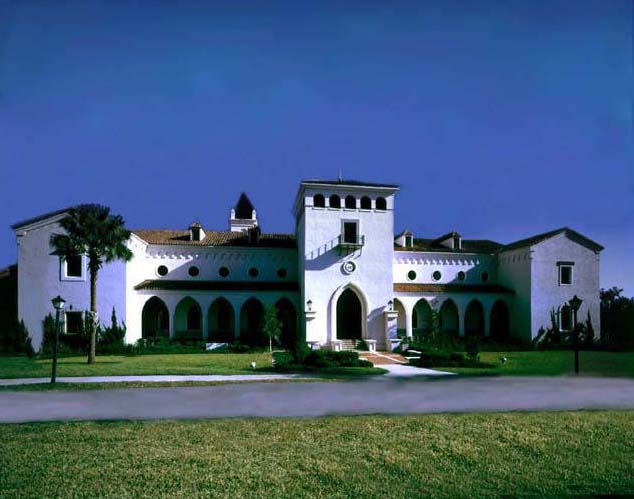Olin Library

Olin in 1990
The College’s first library was located in the original Knowles Hall (built in 1885-1886). Other libraries throughout Rollins’ history were the Carnegie Library (built in 1909), and the Mills Memorial Library (built in 1951). As the College’s third library, Olin Library has a capacity two times greater than that of the former Mills Library. The construction and furnishing costs of the library were covered by the philanthropic contribution of $4.7 million from the Franklin W. Olin Foundation, a chemical manufacturers’ foundation that has awarded over $100 million for the construction of buildings across college campuses nationwide. At that time, the $4.7-million donation to Rollins, of which $4 million covered the construction costs and $700,000 the furnishings, was the second largest grant the foundation had ever made. The official dedication of the Olin Library took place on April 17, 1985.

Olin from Lake Virginia
The
initial idea for the construction of a new library was raised in a
526-page College Planning Committee report during the presidency of Jack
B. Critchfield (’78H). After five years of lengthy reports and two
visits to the Rollins campus, the Foundation gave the green light for the
funding of the new building. In 1982, on the 97th anniversary of the
College, President Thaddeus Seymour (’90H) announced the donation and
revealed the plans for the immediate construction of the library.

Olin exterior hallway

Olin entrance patio
The
building was designed by Gamble Rogers II of Rogers, Lovelock & Fritz.
Despite objections from some faculty members, the construction of Olin
Library led to the demolition of Knowles Hall II, which resulted the
displacement of the Child Development Center and relocation of the
departments of history, political science, and anthropology. The
architectural design of the library takes a Romanesque spin on a
simplified form of Gothic. In his design, the architect employed arches
and carved ornaments on stone to decorate the building. The windows next
to the entrance contain diamond-shaped leaded glass and bottle-stained
glass. Natural wood structures made from cedar, redwood, and mahogany sit
underneath the Mexican tiles of the roof. The size of windows remains
small to reduce the direct exposure of books to the damaging sunrays.
Inside the library, the study stations are mixed with the bookshelves. The
corridors and walkways of the library are designed to provide maximum
quiet.

Olin interior in 1985

Olin third floor
The 54,000-square-foot building contains a large collection of books, periodicals, special collections, and microfilm materials. The collection of the library is devoted largely to enriching the liberal arts education of the College. An additional structure of 11,000-square feet was added to Olin Library in June 1998. The extension houses the Olin Electronic Research and Information Center, the twenty-four hour computer lab, and the Archive and Special Collections.


Olin at night